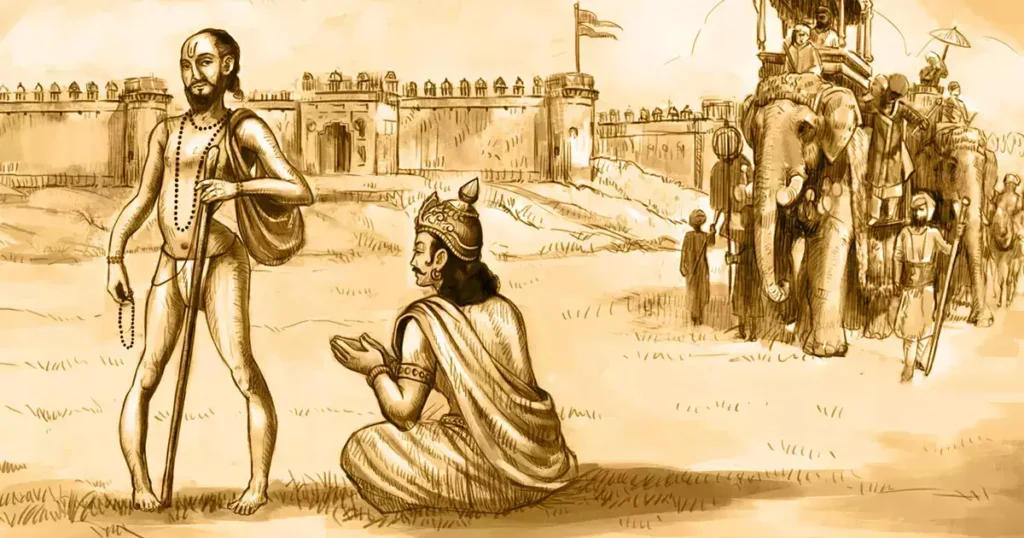The Ashtavakra Gita, a revered text in the world of ancient Indian philosophy, is a dialogue between the sage Ashtavakra and King Janaka.
Unlike many other philosophical texts, this scripture does not emphasize rituals or elaborate metaphysical concepts.
Instead, it focuses on imparting profound wisdom about the nature of reality, the self, and the path to liberation.
The Ashtavakra Gita is celebrated for its direct and uncompromising teachings, which challenge conventional notions and invite the seeker to explore the depths of their consciousness.
In this article, we will delve into the teachings and significance of the Ashtavakra Gita through five key sections, each supported by real-life examples.
The Nature of the Self
At the core of the Ashtavakra Gita lies a deep exploration of the nature of the self. Ashtavakra teaches that the true self often referred to as ‘Atman’ in Hindu philosophy, is beyond the physical body and mind. It is eternal and unchanging, untouched by the vicissitudes of life.
To illustrate this, consider the example of a mirror. When a mirror is dirty or cracked, it may reflect distorted images, but its essential nature remains unchanged. Similarly, our true self remains pure and unblemished, even when our experiences and perceptions may be flawed.
Detachment and Freedom
The Ashtavakra Gita emphasizes detachment as a means to attain true freedom and liberation. Detachment, in this context, does not mean isolation or indifference but rather a state where one is not emotionally entangled with external circumstances.
A real-life example of this teaching can be found in the life of Mahatma Gandhi. Gandhi was deeply committed to the cause of India’s independence but remained detached from the fruits of his actions. His focus was on doing what he believed to be right, regardless of the outcomes.
Beyond Dualities
Ashtavakra challenges the conventional duality of good and bad, pleasure and pain, success and failure. He suggests that these dualities are mere illusions and that the wise person sees beyond them.
An example of this teaching can be found in the life of Viktor Frankl, a Holocaust survivor. In the midst of unimaginable suffering, Frankl found meaning and purpose, transcending the dualities of suffering and happiness by focusing on his inner values and the service he could offer to others.
The Illusion of the World
The sage asserts that the world is an illusion, often referred to as ‘Maya’ in Indian philosophy. This doesn’t mean denying the existence of the world but recognizing that it is impermanent and ever-changing.
An example from the world of physics helps illustrate this concept. Quantum physics shows us that at the subatomic level, particles behave in ways that defy classical notions of reality.
This challenges our perception of the world as solid and stable, aligning with the Ashtavakra Gita’s assertion of the illusory nature of reality.
The Path to Liberation
The Ashtavakra Gita outlines a path to liberation through self-realization. It involves self-inquiry, meditation, and cultivating a deep understanding of the nature of the self.
An example of someone who walked this path is the renowned spiritual teacher Eckhart Tolle. Tolle experienced a profound inner transformation that led him to a state of deep presence and awareness.
His teachings, similar to those of the Ashtavakra Gita, emphasize the importance of living in the present moment and realizing our true nature as consciousness itself.
Wisdom Beyond Dimensions
The Ashtavakra Gita continues to inspire seekers and philosophers worldwide with its timeless wisdom. Its teachings invite us to question our perceptions, detach from the ephemeral, and seek the eternal truth within ourselves.
Through an understanding of the self, detachment, transcendence of dualities, recognition of the illusory nature of the world, and the path to liberation, the Ashtavakra Gita offers a profound roadmap to a life of spiritual fulfillment and inner peace, echoing its significance in the quest for self-realization.

